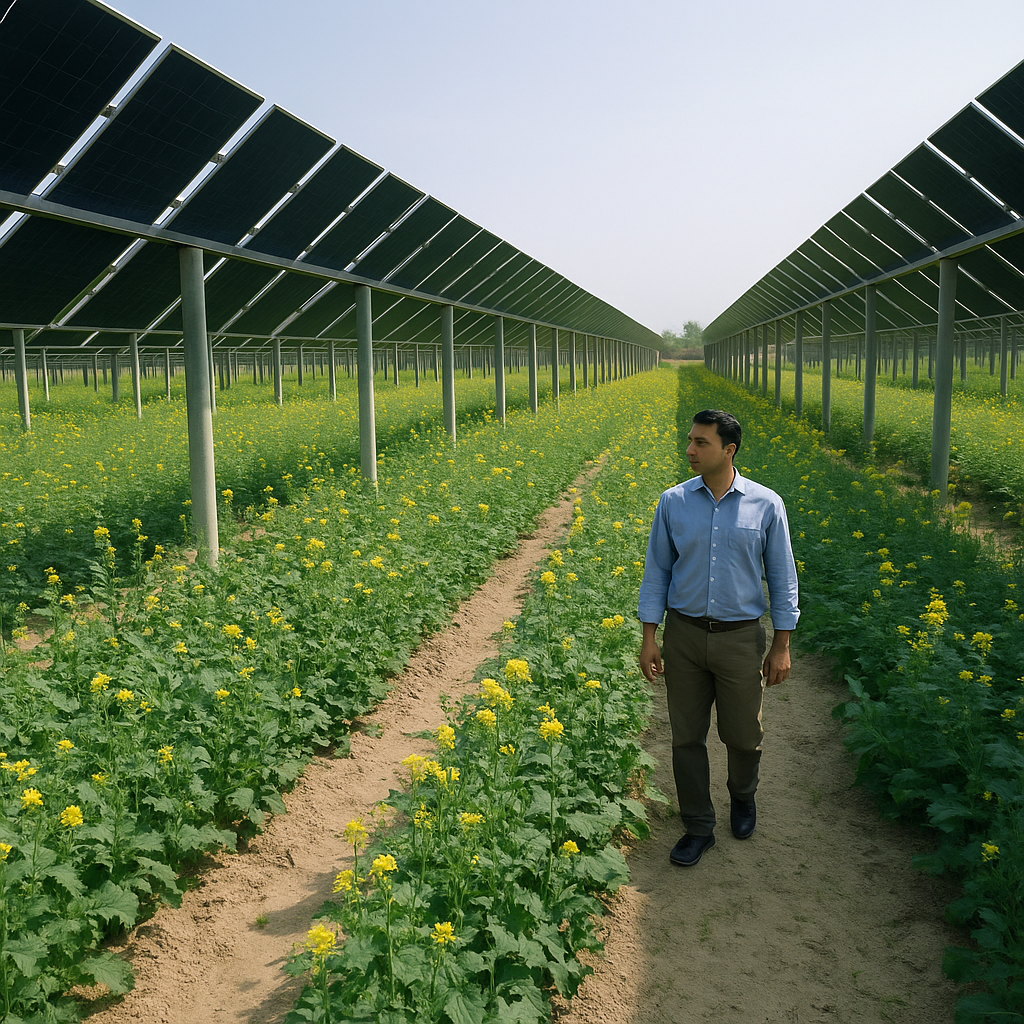When Anand Jain graduated from the Indian Institute of Technology (IIT) Roorkee, a conventional career in engineering awaited him. But two decades later, Jain has become the architect of a far more unconventional legacy — one that fuses clean energy with agriculture, offering a new model for land use in a warming world.
Jain is the founder of what is now India’s largest agrivoltaic solar farm, an expansive project in Madhya Pradesh that overlays photovoltaic panels above actively cultivated farmland. The model allows sunlight to be harvested both as energy and food — marking a breakthrough in the dual-use of India’s increasingly scarce land resources.
“This is not just a solar park,” Jain said in an interview. “It’s a living, working farm that feeds families and fuels homes.”
Energy in the Sky, Food in the Soil
Spanning over 25 acres, the project produces over 5 megawatts of electricity, enough to supply power to thousands of rural households. At the same time, crops like pulses, mustard, and leafy greens continue to grow beneath elevated solar panels — mounted roughly 10 to 12 feet above ground, designed to allow light diffusion, rainwater flow, and even tractor movement.
The result: a landscape that generates income from both harvests and electricity, reduces heat stress on crops, and slows down soil moisture loss — key in a region where summer temperatures routinely cross 45°C.
“It’s the kind of climate-smart infrastructure India needs,” said Dr. Neeraj Kulkarni, a renewable energy policy researcher. “It doesn’t force a trade-off between food security and clean energy.”
A Farmer-Centered Model
Unlike traditional solar farms, which often displace agriculture, Jain’s agrivoltaic design was developed with farmers, not just on their land. Over 70 farmers have leased their plots to the initiative, retaining cultivation rights while receiving annual rent and crop income.
In a country where farm distress continues to dominate rural narratives, the model offers a new kind of sustainability: economic, environmental, and social.
“Earlier, I had one crop and one income,” said Ramesh Patel, a farmer-partner in the project. “Now I have two — and shade for my animals too.”
Scaling Up and Looking Ahead
Jain, who left a high-paying corporate job in the energy sector in 2017 to start his own climate-focused venture, is now working to replicate the model in Rajasthan and Maharashtra. Talks with state governments and private clean energy investors are underway to scale the agrivoltaic concept into a nationwide mission.
His team is also exploring integrated water-harvesting systems and solar-powered cold storage units that can be built under the same structural footprint.
“We want to make every acre in India do more,” Jain said. “This isn’t just about solar. It’s about redesigning rural infrastructure.”
A Policy Window Opens — Cautiously
The Indian government, which aims to reach 500 GW of non-fossil fuel energy by 2030, has increasingly supported agrivoltaic pilots under its renewable energy schemes. But policy clarity around land leases, state-level incentives, and grid integration remains uneven — a fact Jain acknowledges.
“We’ve shown what’s possible. Now it’s about creating frameworks that make it easier to replicate.”
Climate analysts argue that with land-use conflicts rising, especially in densely populated states, dual-use approaches like agrivoltaics will be essential to balancing energy ambitions with agrarian realities.


